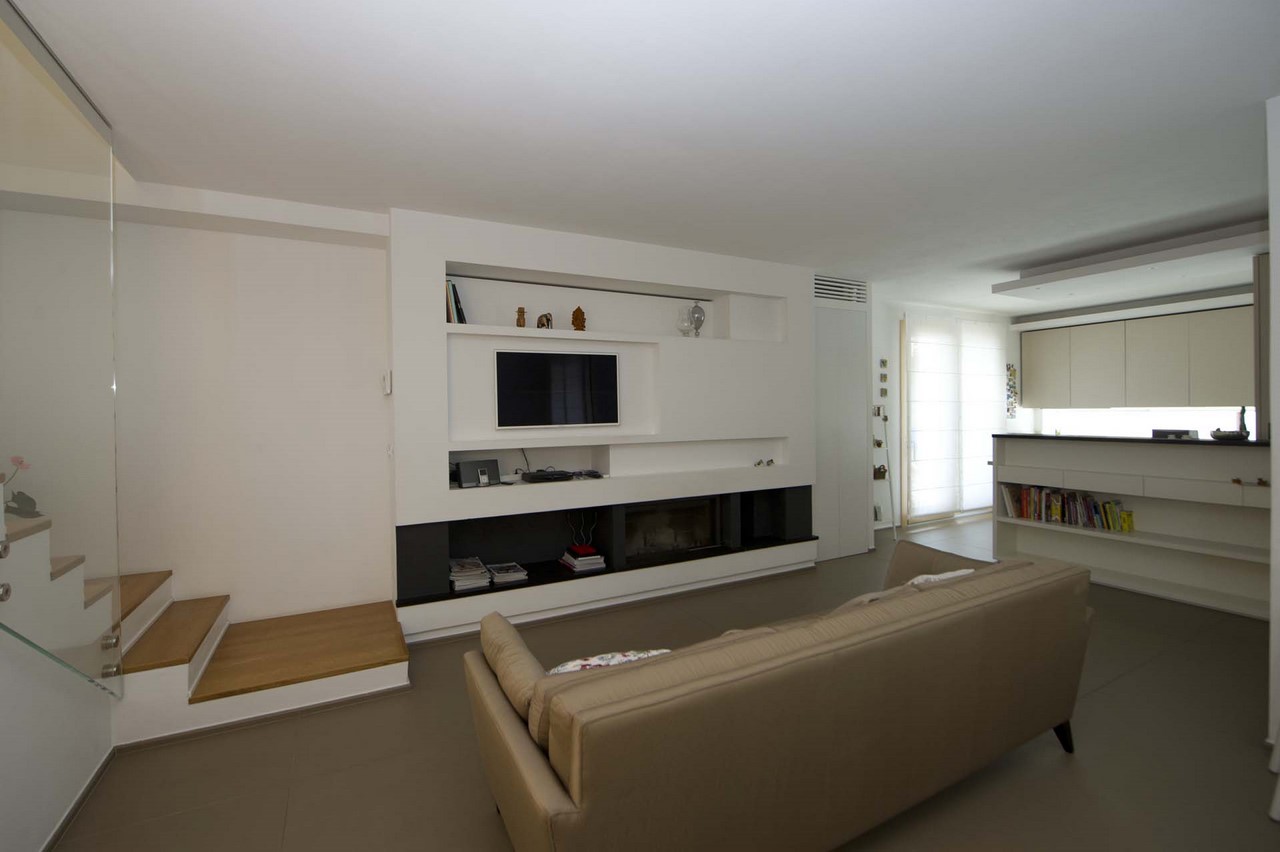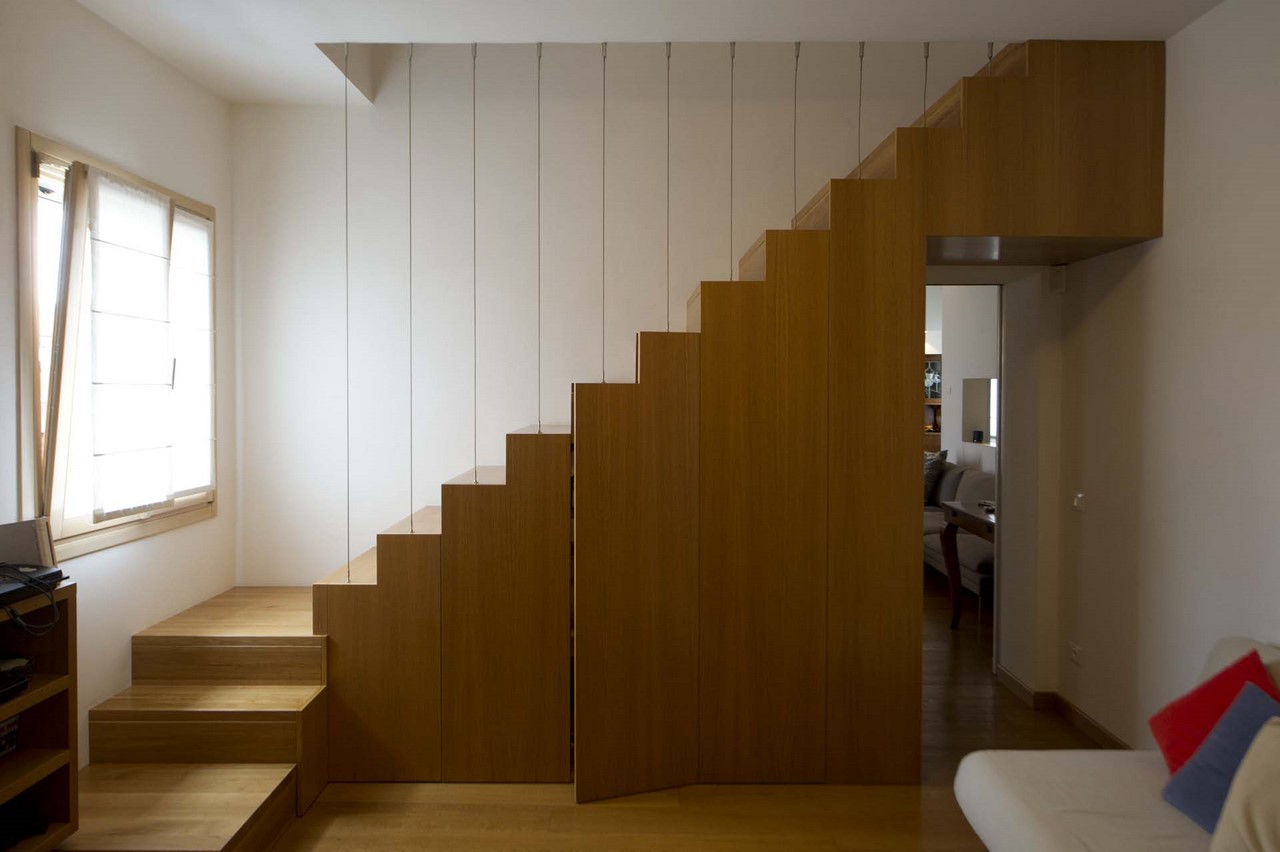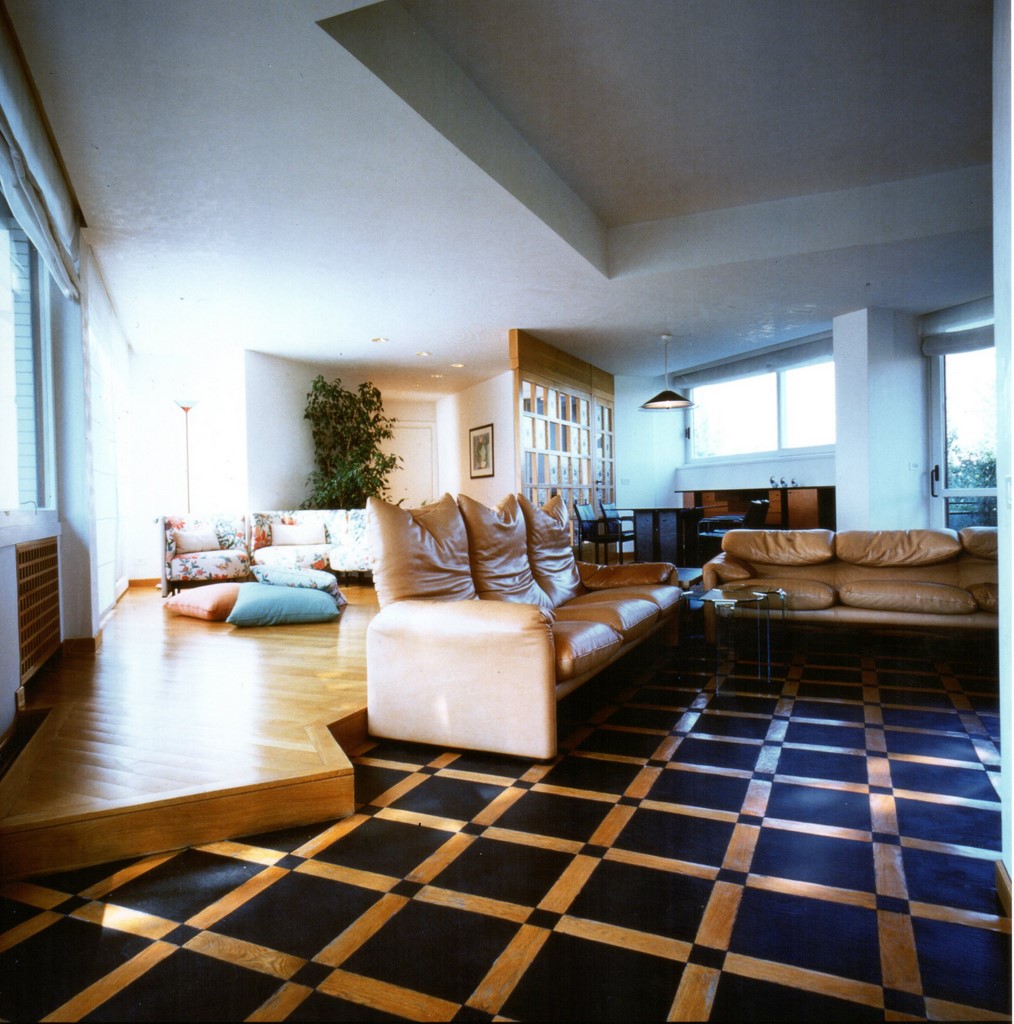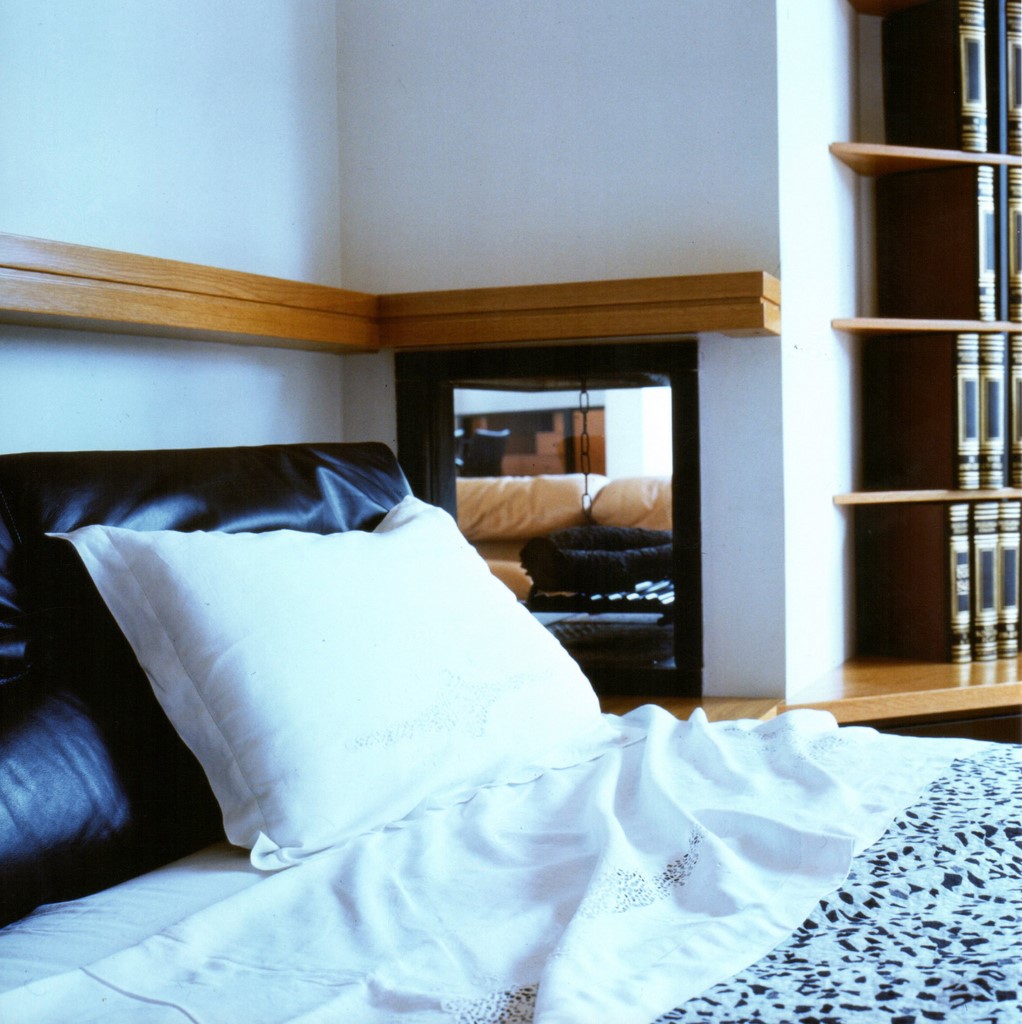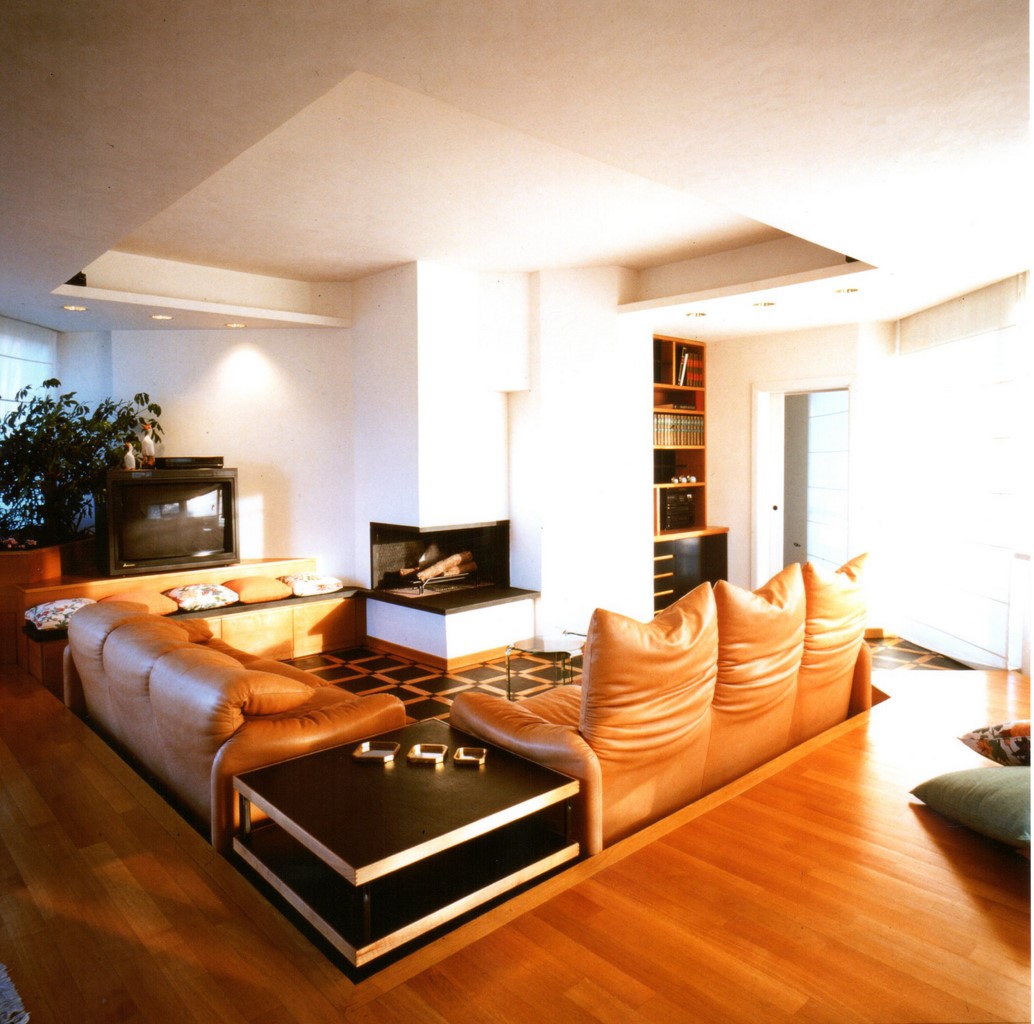Interior Design
Interior Design / Various projects
Nel corso degli anni si presentano per la designer diverse occasioni di arredare spazi domestici, oltre
che commerciali. Pur cambiando committenze e contesti, unitaria resta la visione del progetto di
interni attraverso alcuni punti cardine. Primo fra tutti l’integrazione dei materiali e delle
funzioni della casa. La scelta dei materiali e dei rivestimenti è sempre guidata dalla conformazione
degli spazi originari, dal rispetto per il contesto storico e per le necessità di fruizione degli
abitanti. Altro punto ricorrente è la dilatazione degli spazi tramite tagli e tessiture di materiali
seguendo fughe diagonali. Per esempio, in un appartamento a Roma progettato nel 1980, il pavimento subisce una sovrapposizione graduale di due materie prime principali: negli spazi privati della casa viene
scelto il parquet, il quale viene articolato negli ambienti di soggiorno in una tessitura artigianale
estremamente raffinata grazie all’accostamento con l’ardesia, per poi divenire superficie continua
di ardesia negli spazi esterni. Gli arredi funzionali vengono sempre integrati il più possibile alle pareti e gli elementi contenitori sono nascosti nelle strutture architettoniche per rendere la loro presenza di minimo ingombro. Altro elemento ricorrente dell’Interior design firmato Talocci è l’accento posto su un singolo elemento fortemente scenico che si distingue in un progetto altrimenti sobrio e discreto.
È il caso, per esempio, di un camino che dal soggiorno diviene visivamente “passante” in camera
da letto grazie a una parete trasparente, creando una suggestiva fuga di comunicazione tra ambienti di marcata personalità progettuale.
Over the years, several occasions have arisen for Giovanna Talocci to design interiors for domestic spaces as well as commercial ones. Despite the change of commissions and contexts, her vision of interior design remains unified through the use of some key points. Chief among these, the integration of
materials and the functions of the house. The choice of materials and finishes are always guided by the shape of the original spaces, a respect for the historical context and the usage and needs of those who inhabit them. Another recurring point is the expansion of the spaces through cuts and textures
of materials following diagonal lines. For example, in a Roman apartment, designed in 1980, the flooring undergoes a gradual intermingling of two main materials. Parquet is laid in an artisanal pattern in the private spaces of the house which, as the flooring proceeds out to the apartment’s external spaces, sees the parquet intermingled with slate to become a single, continuous surface of slate outdoors. Functional furnishings are always integrated as much as possible to the walls of a space, whilst container elements are cunningly hidden within in architectural structures to minimize their footprint. Another recurring element of Interior Design by Talocci is the emphasis on a single, highly scenic, element that stands
out in an otherwise sober and discreet design. This is the case, for example, of a fireplace that from the living room becomes a point of visual “passage” into the adjoining bedroom, thanks to a transparent wall which affords a suggestive line of communication between environments of marked design personality.

